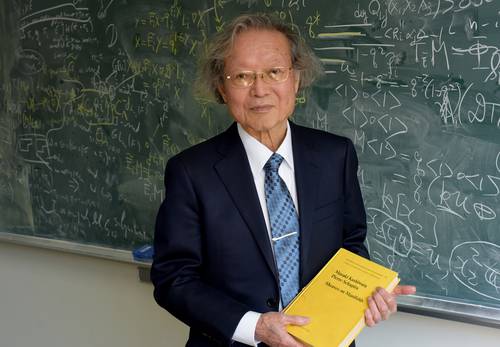Japanese mathematician Masaki Kashiwara was awarded Wednesday with the ABEL 2025 Award, considered the Nobel Of mathematics, for their contributions to algebraic analysis and the theory of representation, the Norwegian Academy of Sciences and Letters announced.
The institution also highlighted in its ruling the development of the theory of the D modules and the discovery of the crystalline bases made by Kashiwara, who becomes the first Japanese to receive that recognition.
The ABEL award, which is thus called in memory of the Norwegian mathematician Niels Henrik Abel (1802-1829), endowed with 661 thousand euros (about 14.3 million pesos), will be delivered on May 20 at an act at the University of Oslo.
Born on January 30, 1947 in Yuki, Ibaraki, Kashiwara showed from his youth inclination for mathematics. His interest in algebra emerged in school in solving problems such as tsurukamezan, which consists in calculating the number of cranes and turtles locked in a box, from the total heads and legs.
This fascination to generalize mathematical methods led him to develop key advances in the discipline.
In the mid-twentieth century, the mathematician Mikio Sato (1928-2023) proposed a new way of studying these equations using algebra tools, instead of traditional methods. This discipline was called algebraic analysis.
Kashiwara met Sato at the University of Tokyo. Under his supervision, the newly awarded the award developed the D-Modules theory, which allows analyzing differential equations with an algebraic approach.
In his master’s thesis in 1970 he introduced a crucial concept: the characteristic variety, which helped generalize important mathematical results and opened new perspectives in the study of these problems.
Throughout his career, Kashiwara worked with prominent mathematicians to connect his theory with other fields. Together with Pierre Schapira, he developed the microlocal analysis, which allows visualizing the behavior of differential equations in geometric spaces. In addition, in collaboration with other researchers, he expanded the famous correspondence of Riemann-Hilbert, a result that links differential equations with more abstract structures called perverse beams.
Another of his achievements was the demonstration of a hypothesis in the theory of representations called Kazhdan-Lusztig conjecture, which describes the relationship between certain mathematical representations and geometric structures. Then, he extended these results to a broader field, which made D-Modules an indispensable tool for mathematicians.
With more than 70 collaborators and half a century of work, Kashiwara has been recognized with multiple awards: Iyanaga in 1981, ASAHI of Sciences in 1988, the Japanese Academy award in the same year and Fujihara in 2008, for its contribution to the development of science and technology in Japan.
In a video released by the prize website, the award -winning said not to understand the news that Marit Westergaard, general secretary of the Norway Academy of Sciences and Letters, who had to repeat the announcement.
I did not expect it at all, I am very surprised. I am very happy. Thanks for this award, I will need a time to assimilate it
he said.
In 2024, the Frenchman Michel Talagrand was distinguished with that award and in 2023 he was obtained by Argentine Luis Ángel Caffarelli, the first Latin American to achieve the award.
